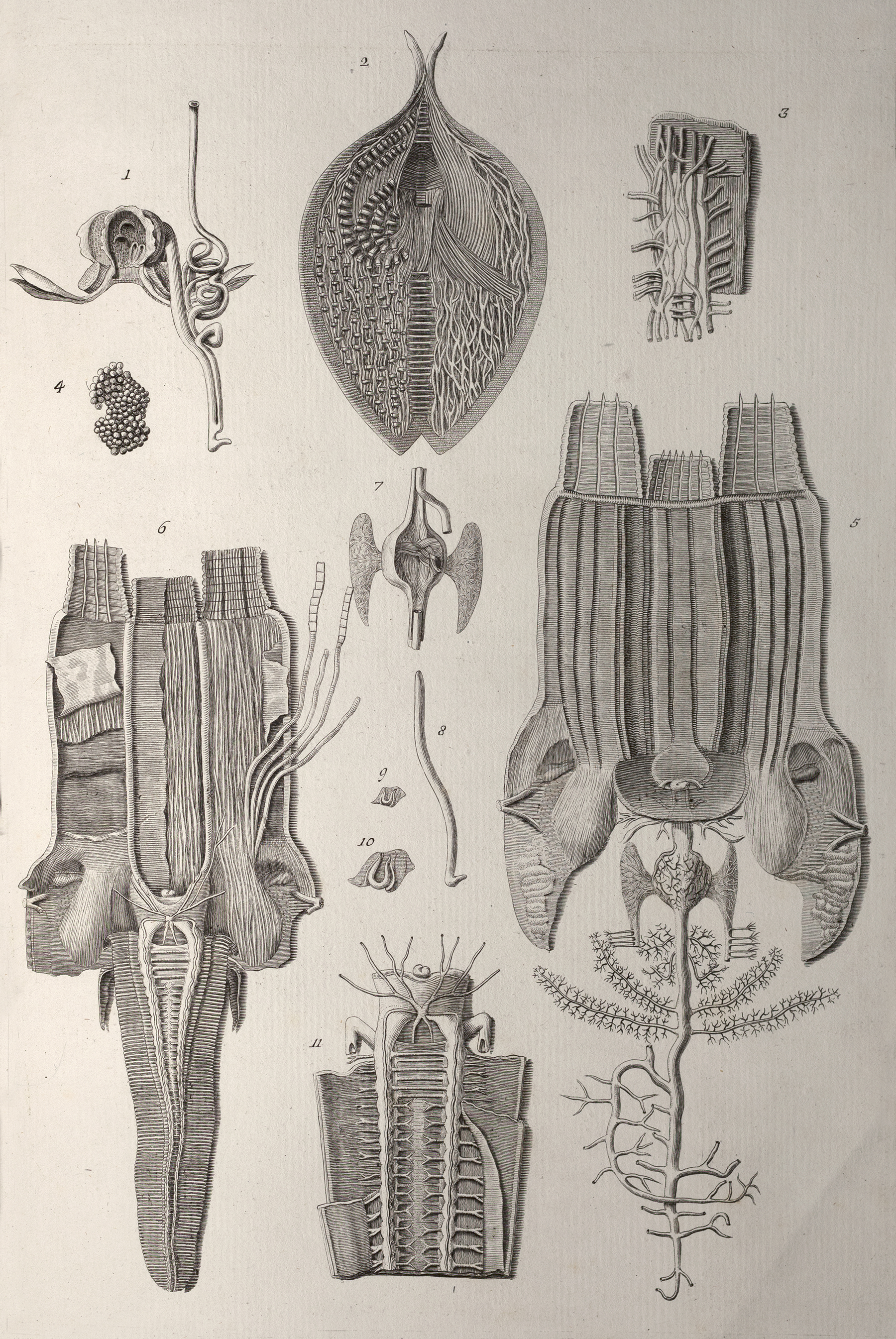A gift from Dr. James "Jim" Bishop: Part III
In addition to Poissons, Ecrevisses et Crabes and Atlas ichthyologique, the third and final book of Jim Bishop's donation is Giuseppe Saverio Poli’s Testacea utriusque Siciliae eorumque historia et anatome: tabulis aeneis illustrate.
Testacea utriusque Siciliae provides text about and intricately detailed illustrations of the shellfish of Sicily, and is the first such work to move beyond simple descriptions of shells to describe and illustrate the anatomy of the creatures inside.
Poli’s (1746-1825) appointment to the Royal Military Academy in 1774 took him to London, where he met Captain James Cook, Sir Joseph Banks, and William Hunter, all of whom had an interest in natural science and in collecting fossils and other specimens of the natural world. Over the years he met other European naturalists who stoked his interest in the natural world. During his career as a medical doctor and teacher, his positions gave him time to pursue his other scientific interests.
This gift included the first two volumes of Testacea utriusque Siciliae, which were published in 1791 and 1795 under Poli’s supervision. A civil war interrupted publication of volume three. Poli’s death in 1825 meant the last volume would be published posthumously with only half of the text attributed to Poli.
As exquisite as they are, the volumes stand out for more than their illustrations and lavish printing techniques. Poli was the first to establish molluscan comparative anatomy as a discipline. He was also the first to measure the contractile forces of molluscan abductor muscles (for which he invented a device), to trace blood flow in mollusks, and to breed them in captivity so as to study their reproduction and development. Poli also created a two-part classification system, one part using the established system based on shell description and the other a wholly new system of his creation based on anatomical description. Though Poli’s system never caught on, some of his descriptions remain in use today.

